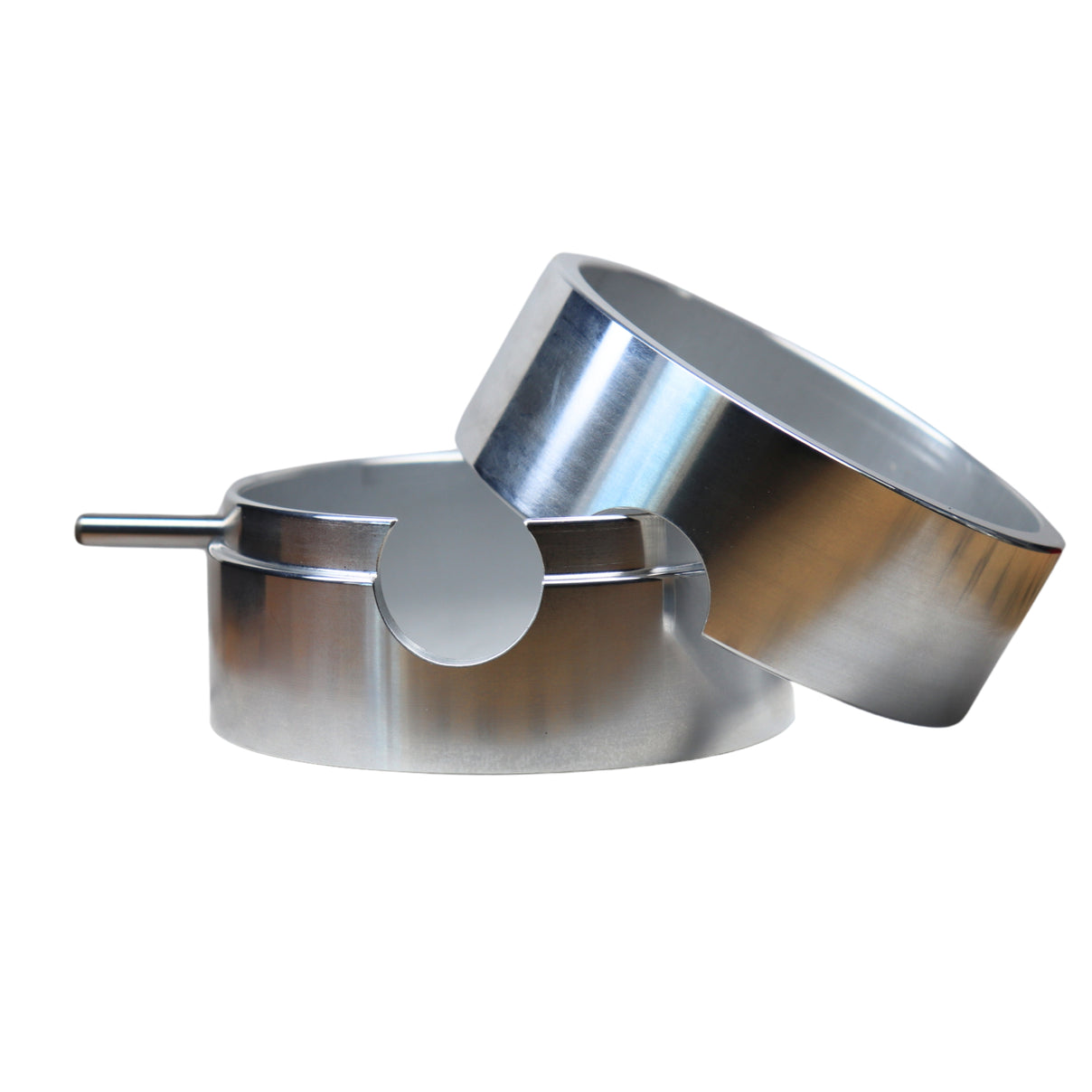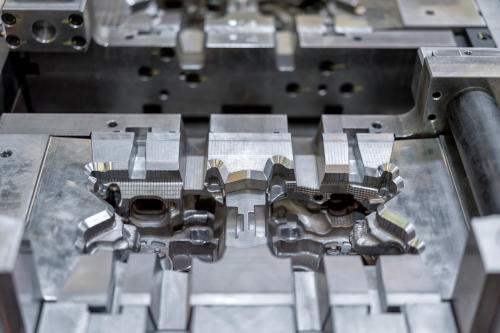Why Aluminum Metal Casting remains a preferred method for precision components
Wiki Article
Recognizing the Manufacturing Process and Maintenance Practices for Aluminum Factory Products
The production procedure for light weight aluminum shop items is detailed and needs a thorough understanding of multiple stages. From the melting of aluminum at heats to various casting techniques, each action plays a vital function. Additionally, maintenance practices assure tools stays effective and items are cost-free from issues. The complexities of these processes and their impact on item quality raising important questions regarding finest methods and cutting-edge strategies in the market.Overview of Light Weight Aluminum Foundry Products
Light weight aluminum factory items are essential components in various industries, supplying a blend of light-weight stamina and deterioration resistance. These products are generally utilized in industries such as auto, aerospace, and building, where resilience and performance are critical. Light weight aluminum's low thickness makes it an ideal material for applications calling for decreased weight without compromising structural stability. The convenience of aluminum enables for the development of intricate geometries, satisfying diverse style needs.Light weight aluminum factory items can be tailored with various alloys to enhance specific homes, such as enhanced thermal conductivity or boosted solidity. Their resistance to oxidation and deterioration guarantees longevity, making them ideal for both indoor and outdoor applications. The mix of these characteristics adds to the growing preference for aluminum in modern-day production. As sectors look for to optimize efficiency and sustainability, light weight aluminum factory products continue to play an important function in meeting these demands.
Thawing Refine: Changing Aluminum
The melting procedure is a basic action in the manufacturing of aluminum shop items, as it transforms solid light weight aluminum into a molten state suitable for casting. This process generally occurs in a heater, where scrap light weight aluminum or ingots are heated to temperatures around 660 levels Celsius. The choice of heater-- be it electric, gas, or induction-- influences the performance and expense of melting.Throughout melting, cautious consideration is offered to the removal of contaminations, such as oxides and other impurities, which can negatively impact the top quality of the end product. Fluxes may be included to assist in this filtration process, boosting the fluidity of the liquified metal.
Furthermore, temperature control is crucial to ensure harmony and avoid getting too hot, which can result in oxidation. The melting process not only prepares light weight aluminum for spreading but also plays a substantial role in figuring out the honesty and homes of the last shop items.
Casting Techniques in Aluminum Factory
Numerous spreading methods are utilized in aluminum shops to develop high-quality components, each suited to different applications and requirements. Amongst the most typically utilized methods are sand casting, die casting, and investment casting. Sand spreading makes use of a mix of sand and binder to form mold and mildews, enabling complex shapes and huge parts (aluminum metal casting). Pass away casting, identified by the high-pressure injection of liquified aluminum right into steel mold and mildews, produces specific and repeatable parts, suitable for automation. Investment spreading, or lost-wax casting, entails producing a wax model that is covered in a ceramic shell, making it possible for fine details and detailed designs. Each technique has its advantages; sand spreading is economical for low-volume production, while die spreading uses efficiency for high-volume runs. Investment spreading is favored for parts requiring exceptional precision and surface coating. Picking the appropriate method relies on factors such as production volume, component intricacy, and product properties
Finishing Processes for Aluminum Components
After casting methods have actually formed the light weight aluminum elements, ending up procedures play a substantial duty in boosting their capability and visual appeal. These processes normally consist of machining, surface area therapy, and layer applications. Machining entails specific elimination of product to accomplish wanted dimensions and surface quality. This is vital for guaranteeing that elements fit flawlessly right into their intended applications.Surface area therapies, such as anodizing and sprucing up, are utilized to improve deterioration resistance and boost visual qualities. Aluminum Casting. Anodizing, specifically, provides a safety oxide layer, making the aluminum extra long lasting and visually appealing

Upkeep Practices for Longevity
Implementing regular maintenance techniques is essential for making certain the long life of light weight aluminum factory products. Routine inspections should be performed to recognize deterioration, as early detection can prevent pricey repair services and prolong the life expectancy of components. Cleansing devices and websites machinery frequently reduces the risk of contamination, which can detrimentally impact product top quality. Lubrication of moving parts is additionally essential, as it decreases rubbing and wear, improving operational performance.Additionally, the implementation of a preventative maintenance timetable assists in systematically addressing prospective issues prior to they escalate (Casting Foundry). This includes monitoring for leaks, making certain appropriate alignment, and adjusting machinery. Staff training on correct handling and upkeep methods fosters a society of care, which is critical for maintaining item stability. Documenting upkeep tasks provides useful insights into efficiency trends, enabling for informed decision-making regarding future maintenance strategies.
Top Quality Control and Testing in Light Weight Aluminum Shop Manufacturing
Quality control and testing are extremely important in light weight aluminum shop production, as they guarantee that final products meet specified standards and customer expectations. This process begins with raw material evaluation, making sure that light weight aluminum alloys conform with needed make-ups. Throughout the manufacturing cycle, in-process Web Site examinations are performed to check criteria like product, pressure, and temperature flow.
Once spreading is total, various tests-- such as dimensional checks, aesthetic examinations, and non-destructive screening-- are carried out to identify any kind of flaws. Mechanical properties, consisting of tensile strength and solidity, are assessed through standard testing approaches.
In addition, adherence to market criteria, such as ISO and ASTM, is important for guaranteeing item high quality. Statistical process control strategies are commonly employed to evaluate manufacturing data and facilitate continual improvement. By executing strenuous high quality control measures, aluminum factories can boost product reliability and lessen waste, ultimately resulting in better customer contentment and operational efficiency.
Often Asked Concerns
What Are the Ecological Influences of Aluminum Foundry Operations?
Aluminum foundry operations can cause substantial ecological influences, consisting of air contamination from emissions, water contamination from waste discharge, and energy consumption adding to greenhouse gas emissions, eventually impacting neighborhood ecosystems and community health.Exactly How Do Aluminum Prices Affect Foundry Production Decisions?
Aluminum rates significantly affect foundry try this out production choices; greater costs might cause lower outcome or boosted performance procedures, while reduced costs can encourage expanded manufacturing and financial investment in brand-new innovations to improve competitiveness and profitability.What Precaution Are Important in Aluminum Foundries?
Essential security actions in light weight aluminum factories consist of safety gear, appropriate ventilation to lower inhalation of fumes, routine equipment upkeep, training on emergency situation procedures, and adherence to security protocols to stop accidents and injuries amongst workers.Can Light Weight Aluminum Be Recycled, and Exactly How Is It Refined?
Light weight aluminum can undoubtedly be recycled. The procedure involves collection, melting, and changing the material right into new items, significantly decreasing power usage and ecological effect contrasted to primary light weight aluminum manufacturing while protecting worldly high quality.What Prevail Flaws in Light Weight Aluminum Casting and Their Reasons?

The production process for aluminum factory products is intricate and calls for an extensive understanding of several stages. Light weight aluminum shop items are vital elements in various markets, supplying a mix of light-weight toughness and deterioration resistance. The melting process is a fundamental step in the manufacturing of light weight aluminum shop products, as it changes strong light weight aluminum into a liquified state appropriate for casting. Applying regular maintenance techniques is vital for making certain the longevity of aluminum shop products. Quality control and testing are vital in light weight aluminum shop manufacturing, as they assure that last products meet specified standards and client assumptions.
Report this wiki page